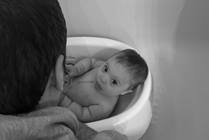Search Results
Viewing: 811-820 of 1459 | All

Condition
Sickle Cell Disease
Sickle cell disease is a lifelong, inherited blood disorder that affects how oxygen flows through the body—causing pain, anemia, and serious complications. Learn about symptoms, treatment options, emergency care, and how to support your child’s health every step of the way.

Condition
Unicameral Bone Cyst
Although unicameral bone cysts are benign, active unicameral bone cysts can cause bones to weaken or fracture.

Blog
5 Questions Every NICU Parent Should Ask
Having a baby in the Neonatal Intensive Care Unit (NICU) can be overwhelming and it can take a while to adjust. Here are 5 questions you might find helpful to ask as a NICU parent.

Condition
Duodenal Atresia
Duodenal atresia is a congenital condition where the duodenum is narrowed or blocked. The duodenum is the first part of the small bowel (intestine). This blockage keeps liquids and food from passing through the stomach into the rest of the intestine. The cause of duodenal atresia is not known.
Developmental Dysplasia of the Hip
Developmental Dysplasia of the Hip (DDH) is a term that includes several types of hip disorders that occur at different ages. DDH may be present at birth or may develop over time.

Condition
Elevated Liver Enzymes
Elevated (too high) levels of liver enzymes are a warning sign that something might be harming the liver. Two of these enzymes are alanine aminotransferase (ALT) and aspartate aminotransferase (AST). Symptoms of elevated liver enzymes may include jaundice and swelling of the abdomen, arms or legs.

Blog
Migraine and Tension Headaches: Using Massage to Ease the Pain
Raise your hand if you enjoy having a headache. Silly, right? Nobody likes the pain, frustration, and lost time a headache can bring. Yet many of us suffer from them, including your children. The National Headache Foundation reports that 1 in 5 US children ages 5-17 are prone to headaches.

Condition
Velopharyngeal Dysfunction (VPD)
Velopharyngeal dysfunction (VPD) is the inadequate separation of the oral and nasal cavities during speech and/or swallowing. At Nationwide Children’s Hospital, our experts in the Velopharyngeal Dysfunction Program provide specialized treatment for patients with speech disorders resulting from VPD.

Blog
New Parent Confessions: Bathtime Safety
Most baby products and safety guidelines are created for children of average size and development. What’s a parent to do if their baby is very small or very large for their age, or meeting developmental milestones at a different rate than their peers?
Article
COVID-19 Updates
We offer several services to support efforts against the novel coronavirus causing COVID-19, including a Patient Information and Testing Hotline, a Provider Information Line and a drive-up testing site.
